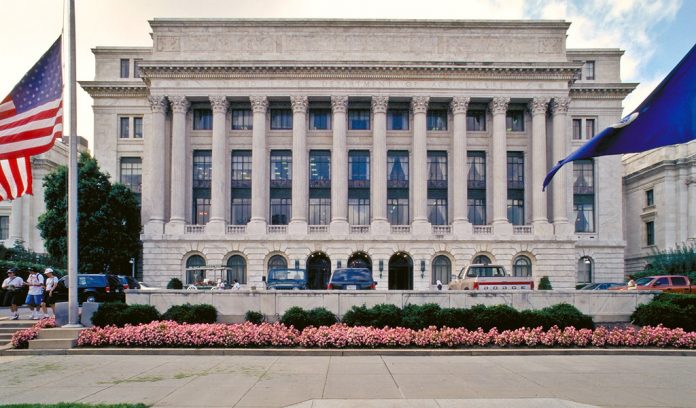
Friday was a big day for our farm. It was the day that our first-ever EQIP application would be submitted for ranking.
We have a few projects on our farm that badly need to be done to move our farm forward and make it sustainable for generations to come. I worked out a plan to leverage several different buckets of federal and state monies to get this work done while limiting our out-of-pocket expenses.
One of those buckets was the Environmental Quality Incentive Program, which, through the U.S. Department of Agriculture’s Natural Resources Conservation Service, gives farmers financial assistance for implementing conservation practices on their farms.
Another bucket was the Climate-Smart Commodities program, launched by the Biden administration to further incentivize farmers to implement conservation practices that have been deemed “climate-friendly.”
Then, on Jan. 20, the tide changed. First, I heard that the Trump administration had frozen all funding as it reviewed all programs enacted by the previous administration. This move was later reversed, but some funding remained stalled, including the Climate-Smart Commodities program and some EQIP funding. Then, on Friday, hours after I emailed back and forth with my district conservationist at the NRCS about some last-minute changes on the reports that went with our EQIP application, I heard there had been massive layoffs at the USDA.
Among the 200,000 federal employees terminated by the new administration were those employed by the NRCS as well as the USDA’s Agricultural Research Service, Animal and Plant Health Inspection Service, Economic Research Service, National Institute for Food and Agriculture and Rural Development. It’s still unclear how many workers the USDA lost.
My stomach dropped. It had taken us a long time to get to this point. I don’t mean the paperwork to get all this stuff done. I mean the years of gradually convincing my family that working with the government could benefit us more than hurt us.
Before last fall, our farm never had a Farm Service Agency number, the thing that identifies you to the USDA’s financial support arm and allows you to receive government funding. My husband’s family, whose farm I help manage in western Pennsylvania, has historically been skeptical of any government intervention, good or bad. Think of President Ronald Reagan’s speech where he said, “I’ve always felt the nine most terrifying words in the English language are: I’m from the government, and I’m here to help.”
The less the government knew about our farm the better. Not just the feds. Any of them. State. Local. They don’t need to be in our business.
Then a train derailed in a neighboring town (East Palestine) in Ohio. We needed help to prove that our land was safe after being in the direct path of a plume of chemical smoke burned off derailed tanker cars. The government was there to help. The U.S. Environmental Protection Agency, the Pennsylvania Department of Agriculture and the Pennsylvania Department of Environmental Protection all visited our farm, took samples and helped ease our minds that our land had not been forever impacted. They were supportive without being intrusive.
The train derailment was how I met John Patterson, who was serving as Ohio’s Farm Service Agency executive director at the time. He came to our farm as part of an interstate multi-agency visit a few months after the derailment to debrief on the government response to the disaster.
He’s one of the people I reached out to after I heard about the USDA staffing cuts on Friday. I wanted to know how Ohio’s USDA staff had been impacted, not realizing that he had been asked to resign Jan. 20 (He was appointed to lead Ohio’s FSA by former President Joe Biden in 2022).
Patterson told me unequivocally that the staffing cuts at the USDA will harm Ohio farmers, particularly the loss of local jobs.
It won’t be a drastic change, but a slow-moving disaster as the remaining staff are hamstrung by the lack of manpower needed to handle the various steps required to responsibly spend government funds. The process to get an EQIP contract, for example, I can attest, is lengthy, and we haven’t even been selected for funding yet.
As projects get delayed, costs will likely increase, he said. Not just financial, but the long-term environmental ramifications of deferred care.
“It will paralyze efforts to be good environmental stewards as we continue to produce agricultural foodstuffs for the American people,” Patterson said.
Frustration in working with the government will grow and trust may be lost, particularly for those like my family, who barely have one foot in the door. Or the ones in southeast Ohio who walked into the FSA office for the first time last fall to seek help after being pummeled by a historic drought.
“These were folks who were fiercely independent. They had never been in our office. They didn’t have a farm number,” Patterson said. “We shuffled office folks — they lived in a hotel — to help these walk-ins in southeast Ohio.”
Patterson said they shifted workers from their northeast Ohio offices to the southeastern office to handle the increased workload. By the time Patterson left, the USDA had distributed more than $30 million in aid to drought-stricken Ohio farmers.
Maybe I’m being too pessimistic. The new ag secretary promised that this upheaval would make the lumbering, bureaucratic USDA “better, stronger, faster and more efficient.”
That’s what many of the moves have been about in the first days of President Donald Trump’s second term — cutting inefficiencies to save money and increase productivity. One month in and already $55 billion has been saved, according to the Department of Government Efficiency.
Some would say these cuts needed to be extreme to force long overdue change to the bloated federal government.
Can I tell you the rest of that Reagan quote — the one where he, a famously small-government guy, alluded to the fact that we shouldn’t trust the government? He was speaking during a press conference after a visit to the Illinois State Fair in August 1986.
“A great many of the current problems on the farm were caused by government-imposed embargoes and inflation, not to mention government’s long history of conflicting and haphazard policies. Our ultimate goal, of course, is economic independence for agriculture, and through steps like the tax reform bill, we seek to return farming to real farmers. But until we make that transition, the government must act compassionately and responsibly.”
For Reagan, that meant extending price-support loans for stored grain during a period of low prices and overproduction. This came even as his administration had committed a record amount — $26 billion that fiscal year — in federal assistance to farmers.
While the government shouldn’t overstep its bounds, as a basic rule, a responsible government should not ignore or actively harm the people it’s supposed to serve.












